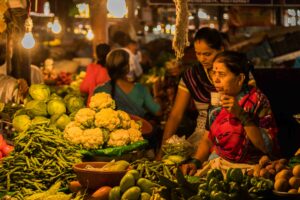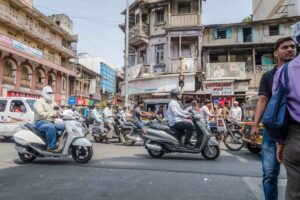Poona changed to Pune… and over the years it has morphed into a whole new entity, writes Arun Mantri
“Pune Thithe Kaay Une”, meaning “there is nothing missing in Pune”, is how diehard Punekars express their love of their home city. My wife and I recently relocated to Pune after spending about 36 years in Washington D.C working at the World Bank and International Monetary Fund. We had always planned to retire to Pune when we got married in 1983 on the rooftop of our home on the banks of Mutha River, and Pune, like us, has changed over those 36 years. However, we do miss some things in the New Pune we have returned to.
Poona (now Pune) was then a quaint town compared to the much larger port city of Bombay (now Mumbai). It had several traditions that made it unique. Many, like my family, had moved to Pune as it had very good educational institutions in all fields and at all levels. It also had a cantonment established by the British. The Indian armed forces built on that and housed the National Defence Academy (NDA), the Armed Forces Medical College (AFMC), and the Army School of Physical Training (ASPT). Historically, Pune was also the seat of the Maratha empire until the Peshwas lost a key battle with the British on the outskirts of Pune. It had a rich cultural legacy in Hindustani classical music and also Marathi theatre. Many classical artists like Bhimsen Joshi and Annapurna Devi had moved to Pune and nurtured young talent. Pune was also slow-paced – as shops would close in the afternoon so that the owners could go home to eat and have a nap. Pune weather all year round made it a great choice for retirees and pensioners, who would assemble on the hilltops around like Parvati and discuss world affairs and how they could be solved.
That Puneri frankness
There was also an unmistakable characteristic about Punekars – who were always direct and not afraid to speak their minds. The boards around Pune (Puneri Paatya as locals would call it) had almost dictatorial fiats and instructions that directed the readers with Dos and Dont’s – or Else. (See http://assal-marathi-puneri-patya.blogspot.com/ for some examples.) Indeed, there was nothing missing in Pune. Yet, an assignment at the World Bank in Washington D.C to develop a complicated financial system beckoned and we left.
The Pune we left behind has changed remarkably some for the good and some for the worse. Here are some things we miss in the new Pune.
- Old-time restaurants that have disappeared – Latifs, Greenfields, Kamling, Jan Seva Dudh Mandir, Sunrise Cafe. Pune always offered a blend of food ranging from Irani, Mughlai, North Indian, South Indian, Chinese and Maharashtrian cuisine. Latifs in the Cantonment area offered excellent non-vegetarian Mughlai options. Kamling was a smaller Chinese restaurant on East Street that competed successfully with Chinese Room. Many of the Irani restaurants like Sunrise Café have been redeveloped as real estate conversion offering the old owners a good exit into retirement. Jan Seva Dudh Mandir that had the best Kharwas in town seemed to have sold out to apparel retailers, sad indeed. Greenfields run by ABC (Aga Bhathena Chinoy) Farms served excellent milk and cheese products. It was very popular with the Rajneesh disciples and served a special drink called Swedish milk (like Skyr). I was told by good authority that NRN Murthy and Sudha Kulkarni would hang out here often and NRN proposed to Sudha at Greenfields.

- Old movie theatres are now shopping malls– West End, Deccan, Hind Vijay. Going to movies to these theatres was a great pastime in the days when TV and cable were yet to become mainstream. West End and Alka showed English movies. I remember going to movies with NRN Murthy who absolutely did not want to miss any of the advertisements that preceded the movies. The favorite snack at interval would be Batata Wada. All these theatres have disappeared and have become shopping malls.
- Bookshops like Manneys and Popular Book House. Another place for us to hangout was these excellent bookshops that had a great collection of both English and Marathi books. Manney’s run by Mr. Mani was originally housed in a colonial-style bungalow next to the West End theatre. West End theatre had an outdoor soda shop that would serve interesting concoctions. Popular Book House in Deccan Gymkhana run by Mr. Gadgil had a great collection of Marathi books and also ran a library with knowledgeable staff.
- British Council Library – The British Council Library was another place where one could spend lazy afternoons and weekends reading books and browsing magazines like Punch.

- Hong Kong Lane – In the past the main items sold used to be comics – TinTin, Asterix, Archies, Flintstones etc. The lane exists but now sells sunglasses and mobile phone accessories.
- Red-robed Rajneesh sanyasis and sanyasins, Thai monks in saffron robes, Iranian students. Pune was also a favorite destination for foreigners. They seem to have been replaced by students from all over India.
The New Pune still retains its old charm as we discover new restaurants, new live music programs and other ways to enjoy Pune.









